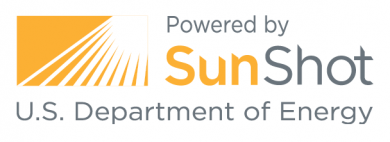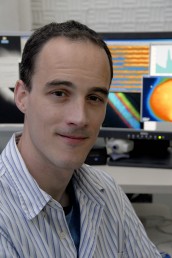U.S. Energy Dept. grant to fund development of next generation solar cells
The University of Illinois at Chicago and four partner institutions have received a three-year, $1.13 million grant from the U.S. Department of Energy to improve a promising solar cell technology.
The project is part of the Energy Department’s SunShot Initiative, a decade-long effort to make solar energy cost-competitive with other forms of electricity by 2020.
The project based at UIC aims to boost the efficiency of photovoltaic cells made of cadmium telluride, a material that is inherently cheap and easy to fabricate for PV cells.
“Cadmium telluride cells are already commercial and can be found on rooftops,” says Robert F. Klie, associate professor of physics at UIC and principal investigator on the grant. He and colleagues at UIC will work with collaborators at Argonne National Laboratory, the Colorado School of Mines, the University of Texas at Dallas and the Bolingbrook, Illinois-based solar energy developer Episolar.
In theory, photovoltaic cells of cadmium telluride should be able to convert light energy to electricity with a maximum efficiency of 30 percent, Klie said. But the best available commercial models are only 15 percent efficient, and only 22 percent has been reached in the laboratory. PV cells made of the more familiar silicon or gallium arsenide operate closer to their theoretical maximum efficiencies.
“We need to improve the efficiency of cadmium telluride to closer to its theoretical limit,” Klie said, in order to take full advantage of the material’s advantages in cost and ease of manufacture. It also absorbs sunlight better than other materials, Klie said, so cells can be made thinner and with less material.
Researchers think that grain boundaries in cadmium telluride – the interfaces between adjacent crystals of the material – are what limit the material’s performance.
“But the grain boundaries are too small for us to measure their influence directly,” Klie said. “We propose to make a ‘bi-crystal’ by bonding two large crystals together, to make one big grain boundary of about one square centimeter.”
Klie and his UIC coworkers will then use electron microscopy to look at the atomic structure and characterize such grain boundaries. Modeling will be done by collaborators at Argonne and Colorado School of Mines, and materials fabrication at UT-Dallas and Episolar.
“By studying the grain boundary we hope to understand how it contributes to limit the efficiency of cadmium telluride solar cells – and how we might fix them,” Klie said.
 The SunShot Initiative is a collaborative national effort that aggressively drives innovation to make solar energy fully cost-competitive with traditional energy sources before the end of the decade. Through SunShot, the Energy Department supports efforts by private companies, universities and national laboratories to drive down the cost of solar electricity to $0.06 per kilowatt-hour or $1 per watt. Current solar costs average about $0.10 per kilowatt-hour.
The SunShot Initiative is a collaborative national effort that aggressively drives innovation to make solar energy fully cost-competitive with traditional energy sources before the end of the decade. Through SunShot, the Energy Department supports efforts by private companies, universities and national laboratories to drive down the cost of solar electricity to $0.06 per kilowatt-hour or $1 per watt. Current solar costs average about $0.10 per kilowatt-hour.

